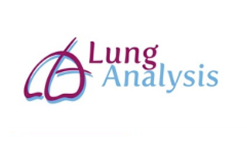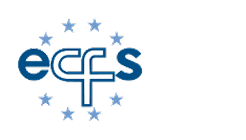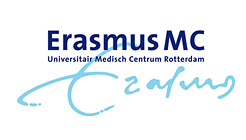Goal
The ENRICH project aims to strengthen the clinical value of the ECFS Patient Registry by introducing a standardized and validated method to quantify structural lung abnormalities from chest CT, enabling more accurate monitoring of therapeutic impact and disease progression in cystic fibrosis.
Medical Application
By embedding quantitative CT (QCT) outcome measures into the registry, The project aims to deliver deeper insights into CF progression and treatment effectiveness, ultimately contributing to improved patient care and more advanced research.
Timeline
Collaborating Partners
Contribution by Thirona
Thirona's solution quantifies structural lung abnormalities in the patient cohort, using its AI-based analyses . This approach automates the well-established PRAGMA-CF scoring method to provide detailed measurements from chest CT scans. Furthermore, it includes precise quantification of bronchial wall thickness, the bronchus-to-artery ratios (i.e., the LungQ® BA analysis), mucus plug volume and count (i.e., the LungQ® Mucus Plugging analysis), and air trapping (i.e., the LungQ® VERA analysis). This marks the first time the ECFS Patient Registry plans to integrate the AI-powered imaging outcome analysis into its database.
Background
The European Cystic Fibrosis Society (ECFS) Patient Registry, with data from over54,000 individuals, is a vital resource for advancing our understanding of this rareand challenging-to-treat disease. However, it currently lacks standardized reporting for structural lung abnormalities – a key limitation that reduces its potential for monitoring therapeutic impact and identifying prognostic risk factors.
LungAnalysis Lab at Erasmus MC, serving as Computed Tomography Core Image Analysis Laboratory of the ECFS-Clinical Trials Network, was awarded a grant by the U.S. Cystic Fibrosis Foundation (CFF) in 2022 to lead the ENRICH project. This significant four-year initiative (2022-2026), focuses on analyzing up to 10,000 CT scans from more than 3,000 patients across 12 countries and 20 CF centers, with three core objectives:
- Longitudinal monitoring of disease progression
- Long-term efficacy assessment of CFTR modulators
- Identification of associated risk factor
Initial result:
By the end of November 2025, The analysis of 619 CT scans from both pediatric and adult patient groups at Erasmus MC was completed using AI-based automated tools to quantify structural lung changes pre- and post-Elexacaftor/Tezacaftor/Ivacaftor (ETI) therapy. The study has gained critical insights into the long-term impact of highly effective modulator therapy:
- Strong improvements were observed following ETI introduction
- Baseline abnormalities and subsequent improvements on ETI were more pronounced in adults
- All abnormalities improved across both groups post-ETI; however, they did not fully normalize
- Improvements appeared to persist during the ~3 years follow-up
"Quantifying lung abnormalities provides a crucial new capability for the registry, allowing us to integrate essential data on structural lung damage - particularly when working with such a large patient cohort. Manual analysis at this scale isn’t feasible, but automated tools make it both possible and reliable."
Dr. Daan Caudri | Director of LungAnalysis Lab and Assistant Professor, Erasmus MC


